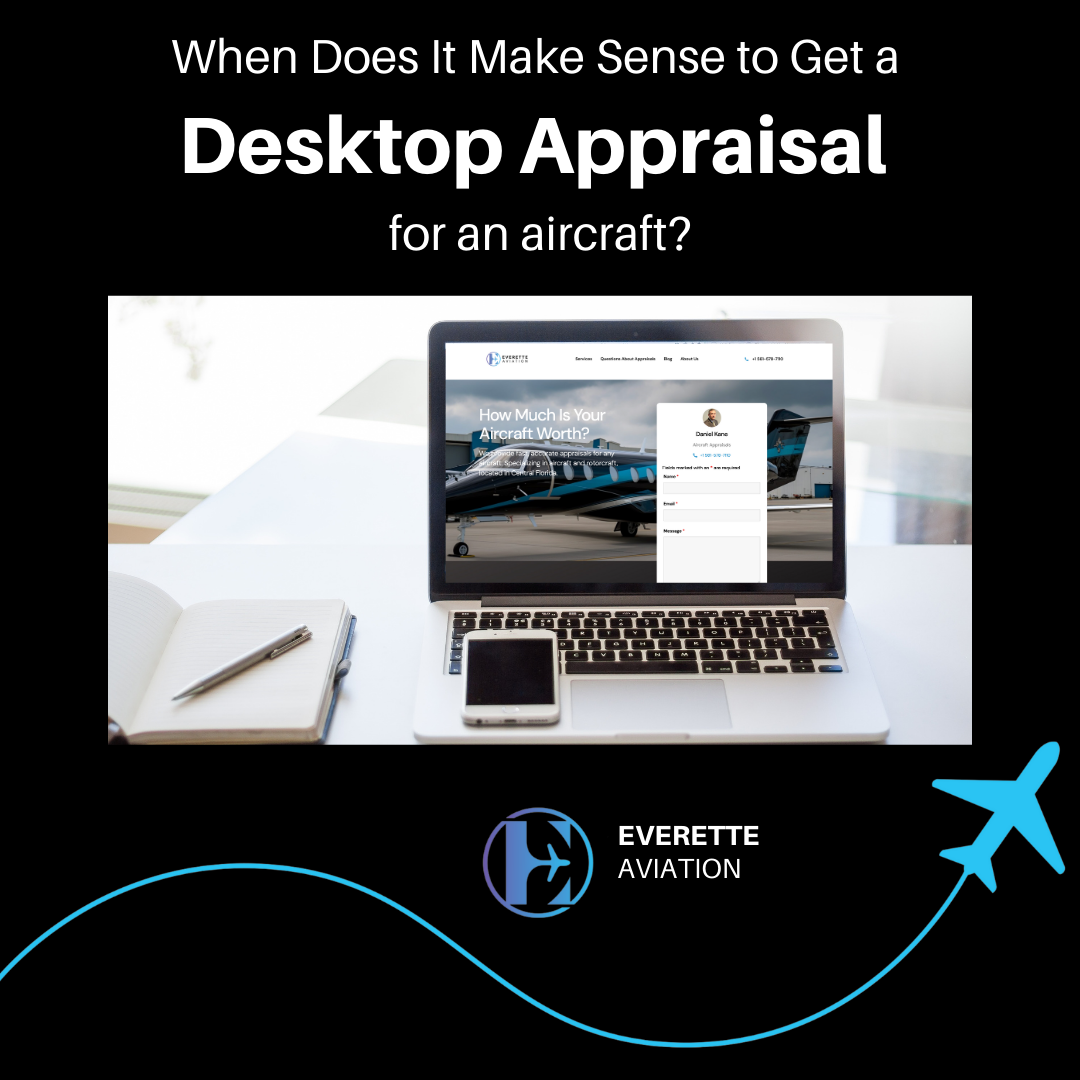Aircraft appraisals are evaluations that determine the value of an aircraft. These appraisals can vary depending on the purpose, the methods used, and the depth of analysis required.
Desktop Appraisal (Limited Appraisal Report)
A desktop appraisal is typically a quick assessment without a physical inspection of the aircraft. The appraiser uses available data such as aircraft logbooks, maintenance records, and market comparisons to estimate the value. The different uses of a desktop appraisal are preliminary evaluations, rough market assessments, or when a detailed on-site appraisal isn’t feasible.
Physical Inspection Appraisal
This type of appraisal involves a thorough physical inspection of the aircraft. The appraiser reviews the aircraft’s condition, logbooks, maintenance records, and any modifications. This method is more comprehensive and provides a detailed assessment of the aircraft’s current condition. Buying or selling transactions, financing, insurance purposes are some of the reasons for a physical inspection appraisal.
Full Appraisal Report
A full appraisal combines both a physical inspection and an in-depth analysis of market data, maintenance history, and other relevant factors. This type of appraisal provides a highly detailed and accurate valuation. Some reasons for a full appraisal report are, legal disputes, tax purposes, estate planning, financing, or when a very accurate valuation is required.
Market Value Appraisal
This appraisal focuses on determining the aircraft’s current market value based on comparable sales, market trends, and economic conditions. The appraiser compares the aircraft to others of similar make, model, age, and condition. Sales transactions, determining resale value, or assessing market trends are reasons for this type of appraisal, and it is one of the most common approaches.
Residual Value Appraisal
Residual value appraisals estimate the future value of an aircraft at a specific time. This type of appraisal is often used in leasing arrangements or long-term financial planning. Leasing contracts, financial forecasting, or long-term asset management.
Liquidation Value Appraisal
This appraisal estimates the value of an aircraft in a forced sale or liquidation scenario. It often results in a lower valuation than a market value appraisal. Bankruptcy proceedings, repossessions, or distressed sales are some reasons for a liquidation value appraisal.
Insurance Appraisal
An insurance appraisal determines the replacement or insured value of an aircraft. It focuses on the cost of replacing the aircraft with a similar one in case of a total loss. Setting insurance premiums, claims settlement, or determining coverage amounts are different reasons for an insurance appraisal.
Diminution in Value Appraisal
This appraisal assesses the decrease in value of an aircraft due to damage or other factors that negatively impact its marketability. Legal claims, post-accident assessments, or when assessing damages are examples of why one may need this type of appraisal.
Each type of appraisal serves a specific purpose and can vary in complexity and cost depending on the level of detail required.









